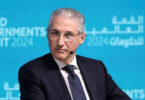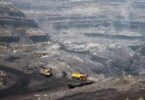William S. Becker
Ever since climate change became a thing, communications experts have been offering advice on how to talk about it. Is hope or hopelessness the message that motivates people to act? Too much gloom creates apocalypse fatigue and fatalism, while too much optimism comes across as unrealistic.
The latest discussion is about President Joe Biden’s messaging — a large helping of doom with a pinch of optimism. Biden has said “we lose it all” if global warming exceeds 1.5 degrees Celsius above pre-industrial levels. Other public figures give similar messages. Secretary General of the United Nations António Guterres, gives blunt warnings of dystopia. He has talked about a “fast track to climate disaster,” a “climate emergency,” and “catastrophic” damages if the world does not act more quickly. He has accused government and business leaders of lying and “choking our planet” by “saying one thing — but doing another.”
All true and based on science, but we’ve heard these stern warnings for decades. Yet, civilization is not rushing to save itself. There has been some progress — the recent investments of billions of federal dollars in clean energy incentives are an example. But it isn’t enough.
Doomsday talk has diminishing returns. As E&E News reports, one of America’s premier climate scientists, Michael Mann at the University of Pennsylvania, describes our current situation not as teetering on the edge of a cliff but instead going “headlong down a fossil fuel highway” at risk of missing the exit.
Although there’s moral satisfaction when we convert skeptics into believers, communications experts advise that we not even use the words “climate change” to some audiences. There’s more traction in discussing jobs, economic stability and the like.
And when we talk about climate change to lay audiences, we must watch our words. Earlier this year, the Yale Program on Climate Change Communication, which conducts scientific research on public opinion, advised, “In communication, it’s important to use terms that are understood by and resonate with one’s audience.” For example, people understand “carbon pollution” better than “greenhouse gas emissions.”
However, the biggest shortcoming in trying to turn non-believers into believers has to do not with words but with visions.
In 1994, the late environmental scientist and educator Donella Meadows famously observed that vision often is missing in policy discussions about the environment. “If we haven’t specified where we want to go, it is hard to set our compass, to muster enthusiasm, or to measure progress,” she said. “But vision is not only missing almost entirely from policy discussions; it is missing from our culture. We talk easily and endlessly about our frustrations, doubts, and complaints, but we speak only rarely, and sometimes with embarrassment, about our dreams and values.”
In 2015, the sustainable development consultancy Futerra made a similar point, encouraging climate activists to “sell the sizzle, not the sausage.” People aren’t likely to buy the message that we’re all going to hell, “but there is one message that almost every audience responds to,” Futerra reported. “We must build a visual and compelling vision of low-carbon heaven.” That’s the sizzle.
In 2011, Ban Ki-moon, the UN’s Secretary-General at the time, adopted the slogan “The Future We Want,” for the big international conference on sustainable development in Rio de Janeiro the following year. An exhibit outside the hall where delegates met displayed videos of how people worldwide were engaged in sustainable development. Children wrote and performed a musical based on the Future We Want at the UN headquarters in Geneva. The phrase so engaged international delegates that Ban adopted it for the rest of his tenure at the UN. Various groups around the world still use it.
But the most compelling message about the need to address climate change combines frank talk about the consequences of inaction and vivid descriptions of a highly desirable post-carbon world with cleaner air, water, transportation and buildings; cities that bring nature back in contact with people; lots of mobility options; and so on.
Our communications should address the push and pull of the change we must make — in other words, what we must avoid and what we can achieve. And discussions of the future should not be “happy talk,” focused on life centuries away, or come across as science fiction. Instead, they must be concrete and reachable and involve the generations who will inherit the future.
We have enough talk about the doom and gloom of unmitigated climate change in the United States. We need more discussion about the future we can still achieve if we get moving.
Courtesy: thehill







